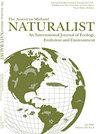鸟瞰:无人机图像在鸟窗碰撞研究中量化垂直反射差异的新应用
IF 0.6
4区 环境科学与生态学
Q4 Agricultural and Biological Sciences
引用次数: 0
摘要
摘要鸟窗碰撞(BWCs)是居民和候鸟死亡的重要来源。由于窗户反映周围的景观成分,如植被或天空,鸟类并不总是将玻璃视为屏障。在这里,我们展示了一种新颖的技术,对美国弗吉尼亚州西南部拉德福德大学校园窗户中的反射进行分类和量化。2020年8月,我们部署了一种消费级无人机,即无人机,拍摄了五栋校园建筑中14个连续或接近连续的窗户柱。对于每一个研究方面,无人机(配备RGB相机)都以大约5米的高度增量拍摄图像,从每栋建筑的底层到屋顶(三到六张图像/垂直列)。然后,我们在ImageJ中手动对每个图像进行分类,以计算反射的大致比例:(1)植被,(2)天空,(3)人工结构或不透水表面,加上(4)无反射玻璃。我们使用广义线性模型来确定植被、天空、建筑物和无反射玻璃的比例反射如何在垂直增量上变化。我们发现天空的比例随着照片高度的增加而显著降低,而非反射玻璃的比例随着高度的增加显著增加。这支持了之前的发现,即由于鸟类被天空反射所吸引,它们可能会在建筑物上相对较低的位置碰撞。校园景观设计和建筑定位的不一致性阻碍了植物或建筑高度反射的趋势。我们的试点研究证明了消费级无人机在调查从不同观测角度影响BWC的反射视觉特征方面的适用性。我们建议扩大无人机图像的使用范围,将其作为一种直接的技术来测量不同观测程度反射特性的变化。它们是一种新的方法,可以在具有中等高度建筑的郊区或校园环境中开发《生物武器公约》风险评估以及潜在的缓解策略。本文章由计算机程序翻译,如有差异,请以英文原文为准。
A Bird's-Eye View: Novel Use of Drone Images to Quantify Differences in Altitudinal Reflections in Bird-window Collision Studies
Abstract. Bird-window collisions (BWCs) constitute a significant source of mortality for both resident and migratory birds. Because windows reflect surrounding landscape components, such as vegetation or sky, birds do not always perceive glass as a barrier. Here we demonstrate a novel technique to classify and quantify reflections in windows on the Radford University campus in southwest Virginia, U.S.A. We deployed a consumer-grade Unmanned Aerial Vehicle, i.e., drone, to photograph 14 contiguous or near-contiguous window columns across five campus buildings in August 2020. For each study aspect, the drone (equipped with an RGB camera) captured images at ca. 5 m altitudinal increments from the ground floor to the roof of each building (three to six images/vertical column). We then manually classified each image in ImageJ to calculate approximate proportions of reflected: (1) vegetation, (2) sky, (3) and artificial structures or impervious surfaces, plus (4) nonreflective glass. We used a generalized linear model to determine how proportional reflections of vegetation, sky, buildings, and nonreflective glass varied across vertical increments. We found the proportion of sky significantly decreased with increasing photo heights, whereas proportion of nonreflective glass significantly increased with increasing heights. This supports previous findings that because birds are drawn to sky reflections, they may collide at relatively lower positions on buildings. Inconsistency in landscape design and building positioning on the campus precluded trends in vegetative or building reflections by height. Our pilot study demonstrates the applicability of a consumer-grade drone for investigating visual characteristics of reflections that influence BWCs from variable observation angles. We suggest the expanded use of drone images as a straightforward technique to measure changes in reflection characteristics from varying degrees of observation. They are a novel method in developing a BWC risk assessment as well as potential mitigation strategies in a suburban or campus environment with buildings of intermediate heights.
求助全文
通过发布文献求助,成功后即可免费获取论文全文。
去求助
来源期刊

American Midland Naturalist
环境科学-生态学
CiteScore
1.20
自引率
0.00%
发文量
38
审稿时长
18-36 weeks
期刊介绍:
The American Midland Naturalist has been published for 90 years by the University of Notre Dame. The connotations of Midland and Naturalist have broadened and its geographic coverage now includes North America with occasional articles from other continents. The old image of naturalist has changed and the journal publishes what Charles Elton aptly termed "scientific natural history" including field and experimental biology. Its significance and breadth of coverage are evident in that the American Midland Naturalist is among the most frequently cited journals in publications on ecology, mammalogy, herpetology, ornithology, ichthyology, parasitology, aquatic and invertebrate biology and other biological disciplines.
 求助内容:
求助内容: 应助结果提醒方式:
应助结果提醒方式:


